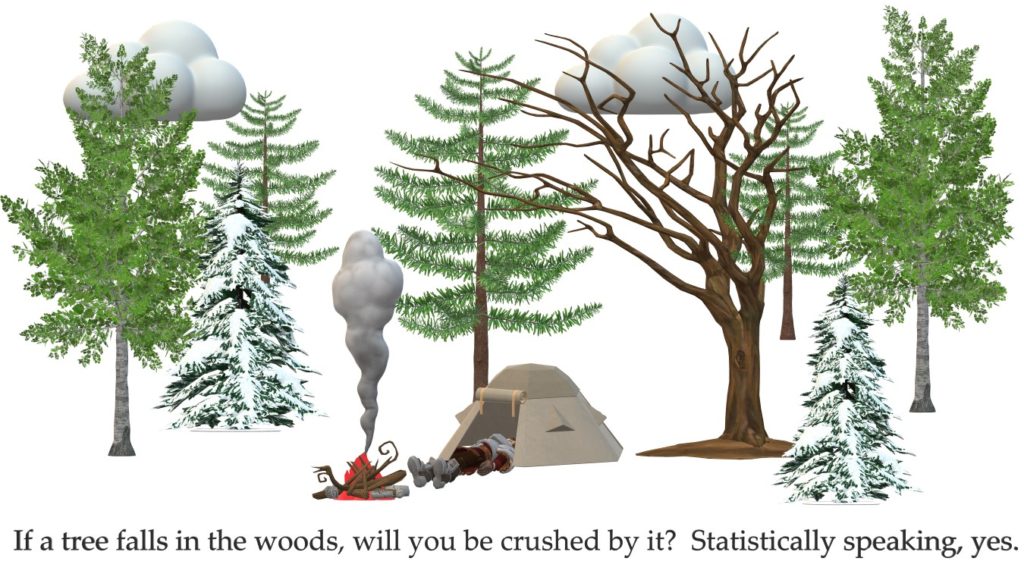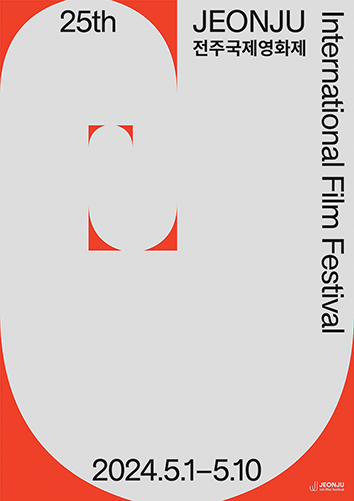Get Paranoid!
Written by William Urbanski.
Imagine yourself standing at the side of a country road. Naturally, there are trucks and cars that use it, but they do so infrequently and irregularly. What would happen if you put on a blindfold, threw in some earplugs, and then crossed the road? Probably nothing, right? Now, what if you repeated this exercise three times a week for ten years? What would happen, as a virtual statistic probability, is that sooner or later you would get smacked back to the stone age by a dilapidated ice cream truck.
This somewhat exaggerated and ridiculous scenario illustrates the usefulness of “constructive paranoia.” This seemingly self-contradicting term was coined by Jared Diamond, the Pulitzer Prize-winning author who could be aptly described as an OG (“original gangster”) of anthropology. Constructive paranoia means the avoidance of any activity for which the risk of a catastrophic outcome (i.e., getting smacked by a dilapidated ice cream truck moving so quickly that there are flames coming out from the tires) is low but where we participate in the activity all the time. Constructive paranoia often results in people avoiding doing things that seem pretty much harmless to an outsider but which are well understood by those in the know to regularly cause devastation.

In his amazing book The World Until Yesterday, Diamond explains, in detail, an example of constructive paranoia that he later realized most likely saved his life many times over. Diamond regularly spent days on end in the forests of Papua New Guinea in order to observe some of the native bird species that are endemic to the region. One time, he decided he would like to set up his camping platform under a massive tree, but his native guides adamantly refused because the tree was dead. Diamond became agitated because even though the tree was dead, it was huge, looked solid, and there was basically no chance that it would fall over and crush him in the night. Long story short, the guides wanted nothing to do with Diamond’s camp-under-a-dead-tree plan, and he was forced to sleep elsewhere.
What Diamond later realized is that as a hard-and-fast rule, natives of the area would under no circumstances sleep under a dead tree. While this seemed ridiculous to Diamond at the time, he later observed that he could almost daily hear trees and branches falling in the woods and that the rhetoric of the people in the native villages was peppered with stories of people who had been maimed or killed by falling timber. As the natives regularly had to camp in the woods (over one hundred nights per year), they intuitively understood that if they made a habit of camping under dead trees, eventually they would be killed by one. Diamond did the math and determined that even though the single chance of a tree falling on someone at any single time was miniscule (in the neighborhood of one in five thousand), at one-hundred nights per year over ten years, getting killed in this manner was pretty much a certainty.
On a side note, I am not sure if you have ever been in the vicinity of a large tree falling down, either by itself, by lightning, or by chainsaw, but as someone who grew up in Canada and who has witnessed it a number of times, I can testify to the fact that it is a natural phenomenon that has ruined many otherwise good pairs of boxer shorts.
It is not hard to think of a number of cases in everyday, modern life where this principle can and should be applied. Here are a few off the top of my head: Never point a knife toward your own body, never touch electronics if your hands are wet, always keep your arms inside moving vehicles, and never look at your phone when crossing the street. All of these activities carry a small risk of something bad happening, but if that bad thing were to occur, you would almost certainly risk being stabbed, electrocuted, maimed, or flattened by a dilapidated ice cream truck with a big pink ice cream cone on top, respectively.
On a second side note, the whole topic of driving a vehicle and not driving like an idiot is a particular case worthy of its own article. But as a special bonus, here are some constructively paranoid ways to stay safe behind the wheel: Always come to a full stop at intersections, do not pass cars at intersections, do not speed, do not drive while upset, and especially, do not forget to buckle your seatbelt. Most of the time, you can get away with neglecting to do these things, but the one time fate catches you, you will almost certainly fly through the windshield and then get run over by a dilapidated ice cream truck piloted by the Grim Reaper himself.
It is fashionable and arguably commendable to be a bit of a risk-taker. There is no shortage of movies and anecdotes that praise the professional poker player, the “extreme athlete” (boy, do I hate that term), and the businessman who takes massive risks and comes through on top. But there are a couple of problems with mimicking such people. First and foremost, even a professional poker player has probably put in his ten-thousand hours learning his trade. To the outsider, it may appear that he is playing fast and loose with the rules and showing commendable bravery, but in reality, the player has a very good understanding of the possible and probable outcomes of what he is doing. Same goes for the Red Bull-adorned athletes who appear to recklessly BASE jump or awesomely fly through valleys on wing suits: Their expertise and preparation limit the risk. The average person has an extremely poor understanding of statistical probability, odds, and the preparation required to mitigate risks. When Average Joe says something is dangerous, he intuitively cannot distinguish between a single outcome resulting in disaster or a lower, more pernicious rate of risk that could result in a calamitous conclusion. Constructive paranoia teaches us that if there is any risk of losing our lives or any similarly catastrophic outcome, no matter how small, and we have to participate in that activity repeatedly, we should take every precaution to avoid that contingency.

The black sheep of constructive paranoia’s extended family is the “precautionary principle.” Common in the field of environmental science, this concept basically states that unless something is scientifically proven to be safe, we should not use it. This is often employed with new technologies and sometimes with laughable results. A case in point: Around the year 2008 at my former university in Ontario, Canada, the president of the university banned Wi-Fi on campus (yes, you read that correctly). His reasoning, as explained in the university’s newsletter, was that according to the precautionary principle, Wi-Fi had not been demonstrated to be safe. He even claimed that some students were experiencing headaches because of the harmful Wi-Fi signals. No doubt the real reason that the students were experiencing headaches was because they attended a university where the president thought it was a good idea to ban Wi-Fi. Lest I digress, it should be noted that the president of the university was not just some guy off the street: He was the president of the university, meaning he was a distinguished academic and a really smart dude. So, what exactly was going through his head? The precautionary principle could be summed up as the “better safe than sorry” rule, but the above example highlights the major criticism of it: It is often used selectively and prevents the adaptation of new technologies or systems that would otherwise be beneficial.
I know all this talk of statistics and death is stunningly interesting, but you are probably wondering what any of this has to do with anything.
In recent weeks, the Korean Immigration Service, ostensibly in response to the ongoing health crisis, made a controversial change to its visa policy in which anyone holding a visa had their re-entry permit exemption suspended. I am not going to get into the fine details of this policy, but it basically boils down to anyone on a visa (read: foreigner in Korea) who wishes to leave Korea needs permission and a medical checkup before being allowed back into the country or risks having their visa cancelled. Naturally, many expats are extremely ticked off about this and some have even condemned the policy as (*gasp*) racist.
Let us clear a few things up right away. First, it is not a racist policy, and in these wild times, we should be particularly careful about throwing that blanket term around. Second, I am not defending this policy at all. I do not like it and do not think it is the best option, but I definitely understand the reasoning behind it.
Who is more likely to travel outside of the country, a native or a foreigner? This is not a trick question. And while we all know that you, the responsible, careful, hand-washing, mask-wearing individual is unlikely to become the next “super-spreader” after your sojourn abroad, think about all the millions of people just like you who enter Korea on a monthly basis. So, even though an individual has a very small chance of contracting the disease and bringing it into the country, when this act is repeated thousands and millions of times, it is almost certain that someone at some point will. In this way, we can see constructive paranoia (“must avoid the worst-possible outcome”) at work. We can also see that this new policy is sprinkled with a healthy dose of the precautionary principle (“better safe than sorry”).
Besides the obvious health concerns that this visa policy addresses (stopping the spread of a virus), remember that Korea is uber-conscientious about how it is perceived by the international community. Korea scored a huge win with its initial response to the pandemic and was held up by many as a model of how to deal a national health crisis. Korea wants to protect this reputation, and if it lets the virus spread again because someone brought it into the country after gallivanting around who-knows-what-country, Korea would risk looking foolish.
Lastly, even if this policy never came into effect, and you were able to exit and enter Korea freely, where exactly would you be flying off to, anyway?
Understanding these principles does not mean you should live your life in fear because there are some risks in life that are unavoidable. Being a little bit dangerous and learning how to take calculated risks can even help you deal with perilous situations. When life is on the line, though, that is when it is time to get paranoid.
The Author
William Urbanski is the managing editor of the Gwangju News and is married to a wonderful Korean woman. Unlike the natives of Papua New Guinea, he is not scared of sleeping under dead trees. Instagram: @will_il_gatto








